In the past few weeks, the most eye-catching thing in the Web3 gaming field has been the TON ecosystem. From NOT's fair issuance of over $ 1 billion in FDV without any venture capital support to Hamster Kombat reaching 142 million registered users in 77 days, the ecosystem has achieved outstanding results almost every week.
Telegram is known as the largest Web3 user channel with 900 million monthly active users (MAU). In addition, Telegram’s features of being more secure and protecting user privacy, as well as its status as the fifth largest and second fastest growing chat tool in the world, have made it a mainstream encrypted messaging application. Every non-U.S. user automatically creates an abstract cryptocurrency wallet when registering on Telegram, making the TON ecosystem stand out as one of the strongest "candidates" for driving mass adoption of Web3.
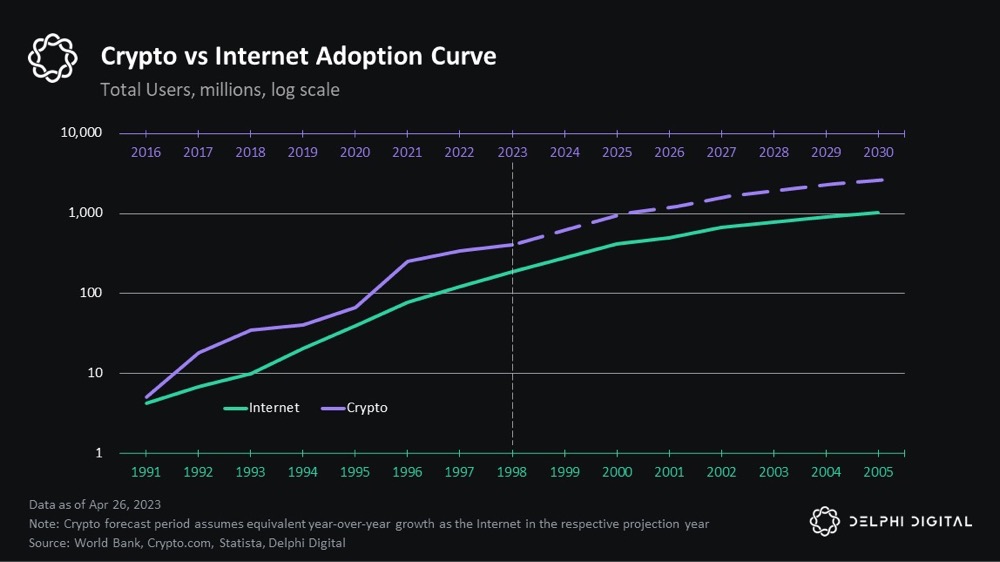
In this report, we will delve into social games, take a closer look at the TON ecosystem, explore Telegram’s uniqueness in acquiring users, focus on five outstanding projects currently developing games on TON, and answer questions about this round of the TON ecosystem. The question of whether game hype has any real meaning.
Social platforms and games
In the 2010s, the Internet became a public good, paving the way for the formation of online social centers. In order to retain users and achieve profitability, these platforms have begun to expand their business scope to games, daily services, e-commerce and other fields.
social games
As the number of users of social platforms grew exponentially in the late 2000s , they began to explore ways to entertain at scale in order to retain as many users as possible and become profitable. Games are easy to spread and highly scalable. At the same time, they can provide users with a long-term immersive experience and bring revenue to the platform. They have naturally become the first choice for social platforms. Facebook, Telegram and WeChat are good examples, all of which have invested significant resources in building gaming divisions. The advantages of large platforms are as follows:
Users can access a wealth of content that enriches their core experience on the platform.
Games are often paired with a social layer that encourages competition and social interaction.
Most games are casual and free, so they are easy to get started, easy to spread, have low development costs and fast iteration speed.
The social platform has a huge user base and has far greater publishing capabilities than most game studios.
The game provides users with sufficient immersion time, and at the same time provides deep consumption potential, improving the overall retention rate and lifetime value (LTV) of the platform.
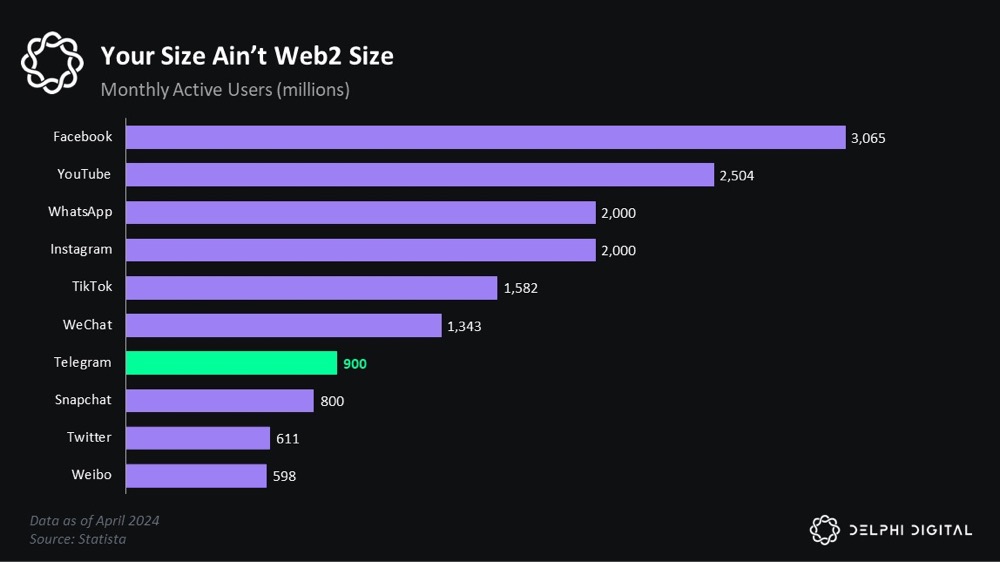
Facebook's move into gaming marked the beginning of an era of social gaming, where even simple games could gain millions of daily active users (DAU) within weeks. The speed and scale of the development of these social gaming ecosystems is truly impressive. Farmville is a social farming game launched by Zynga on Facebook. Its monthly active users reached 10 million two months after its launch. It peaked in 2010 with about 80 million monthly active users. Even three years after its launch, the game still accounts for about 20% of Zynga's total revenue.
It's worth noting that the social nature of these games tends to concentrate the player base within a few big games. Because players usually share their gaming achievements with friends or compete against them, the network effect will eventually lead players to a few large games such as Candy Crush, Farmville, and Zynga Poker. Most of the less well-known games often struggle to capture market share.
Following Facebook's success in the early 2010s, Discord began venturing into gaming later in the decade. As a game-centric chat application, Discord's user base is full of desire for game content. 95% of Discord users' real-time updates are often playing games. Therefore, it is natural to launch native games within the application. . However, after launching a game store and game library in 2018 with little success, Discord quickly abandoned the plan and shifted its focus to Nitro subscriptions in 2019. The lack of easy monetization avenues makes development too risky, limiting potential revenue and innovation.
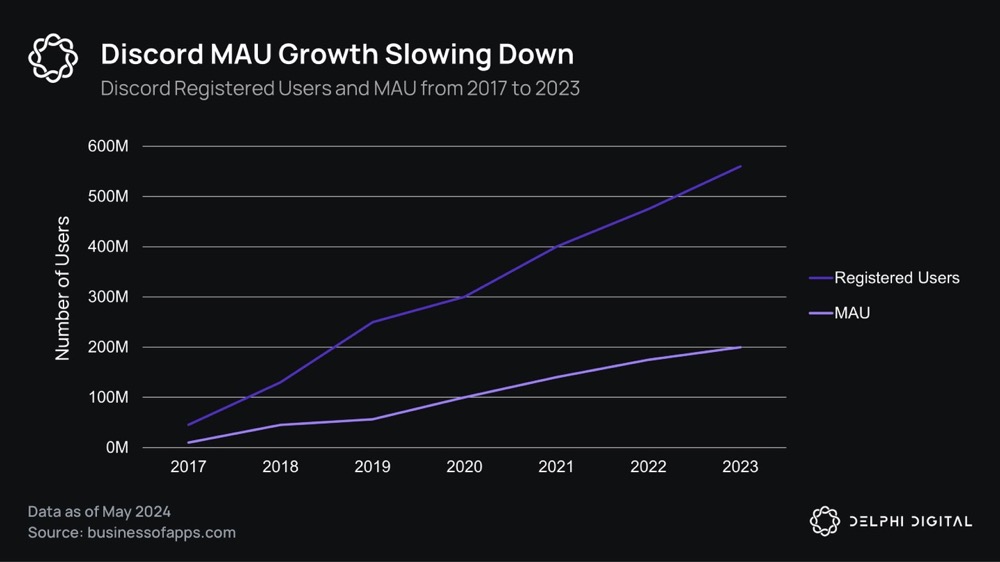
Under the epidemic environment in 2020, the entire gaming industry saw a massive increase in users, resulting in a surge in Discord users. Therefore, the company saw this as an opportunity to expand its target audience and planned to expand the user base from gamers to ordinary consumers. However, four years later, Discord pivoted again after failing to break into the wider consumer market, promising to return to its roots and once again tailor the platform to the needs of gamers.
WeChat: More than communication
Although most messaging apps have added social features such as short videos and groups over time, the extent of user engagement and monetization through other entertainment features such as games is still limited. Although game developers usually do not face any direct obstacles to developing games in this environment, such as early TikTok games , game developers face challenges and risks due to the lack of appropriate infrastructure and payment channels. Due to razor-thin margins in the gaming industry, most development teams will not limit in-app purchases (IAP) at the risk of unnecessary user friction.
Although Facebook games have gradually faded from people's attention, the growth of WeChat shows that there is still huge room for development in the intersection of social applications and games. WeChat can be said to be a super application. Users can not only chat and make phone calls, but also pay utility bills, order meals, book overseas travel, etc.
80% of Chinese citizens use the app monthly, spending an average of about 80 minutes a day on WeChat. By comparison, about 37% of U.S. mobile Internet users use TikTok at least once a month, and the average time spent on the app is about 58 minutes a day.
In 2017, WeChat launched mini programs, allowing certain small applications to run natively within WeChat. Soon after, relying on the natural fit between games and social platforms, WeChat mini programs launched the first few WeChat mini games (first-party games developed by Tencent). By 2018, third-party developers were allowed to access the platform, and by the end of the same year, more than 7,000 WeChat mini-games had been registered.
In the following years, WeChat launched a number of updates to support larger-scale mini-games and the use of more complex game mechanics. However, in 2021, although the number of small game developers is well over 100,000, the number of MAUs has not grown significantly since the launch of this feature (MAUs in 2017 were approximately 20 million). User acquisition is obviously a challenge for these games, so small game developers began to place ads throughout the Tencent ecosystem.
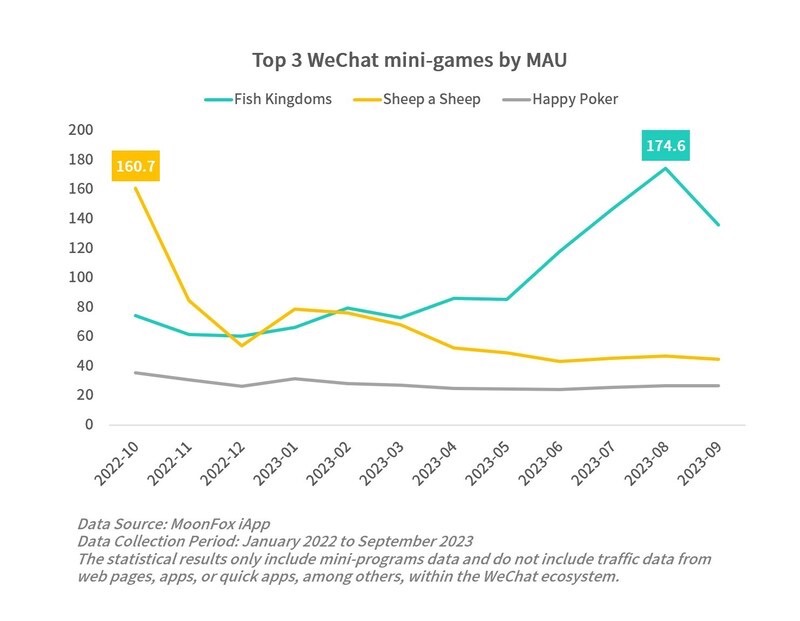
This is a critical moment for the development of WeChat mini-games, but the real heat lies in the support of Bilibili and Douban. These two social platforms began to allow users to jump directly to WeChat mini-games when they click on ads. After that, there was a series of viral spreads, the leader of which was undoubtedly "Sheep" , which is said to have attracted 60 million daily active users in one month!
By June 2023, WeChat mini-game developers have exceeded 300,000, and monthly active players have reached 400 million , accounting for approximately 31% of WeChat’s 1.3 billion users. In addition, industry insiders estimate that the WeChat mini-game market will be valued at US$6 billion in 2023, with annual growth rates expected to be between 25% and 30% in the next five years.
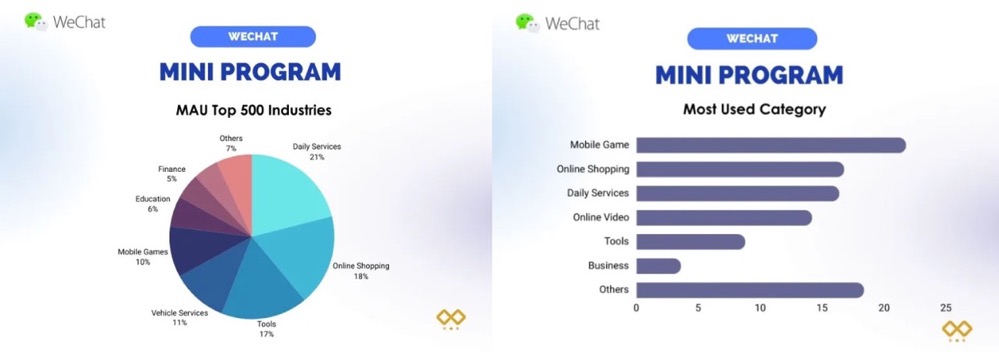
As of the second quarter of 2023, the quarterly revenue of more than 100 small games has reached 10 million yuan (approximately US$1.38 million), and the monthly revenue of several of them even exceeds US$15 million. A key factor in the success of WeChat mini-games is that their profit margins are much higher (more than 30%) compared to traditional mobile games.
However, it should be noted that games only account for about 10% of the top 500 WeChat mini programs by MAU. WeChat is still a social networking application, followed by a life service application, and finally games and other applications. Still, WeChat is a prime case study in what can be achieved by using games to increase user engagement and add new avenues for monetization on a highly integrated, nearly frictionless platform.
After getting to know the above platforms, we turn our attention back to Telegram, the TON Foundation, and the sudden explosion of Telegram mini-games.
Extension suite for Telegram
Telegram was the first pure chat app to really get into gaming. After integrating HTML5 compatibility for Telegram bots in 2016 , TON blockchain development launched in 2017 aims to provide other key features to further reduce user and developer friction. Through TON, developers can build payment facilities, decentralized storage of in-game assets, or smart contracts for secure and automated game mechanics, while efficiently distributing content to a community of 900 million MAU.
TON Ecology
TON's technology stack provides developers with tools to develop various dApps on Telegram. Hundreds of teams are providing services for wallets, exchanges, cross-chain bridges, games and more market needs in the ecosystem.
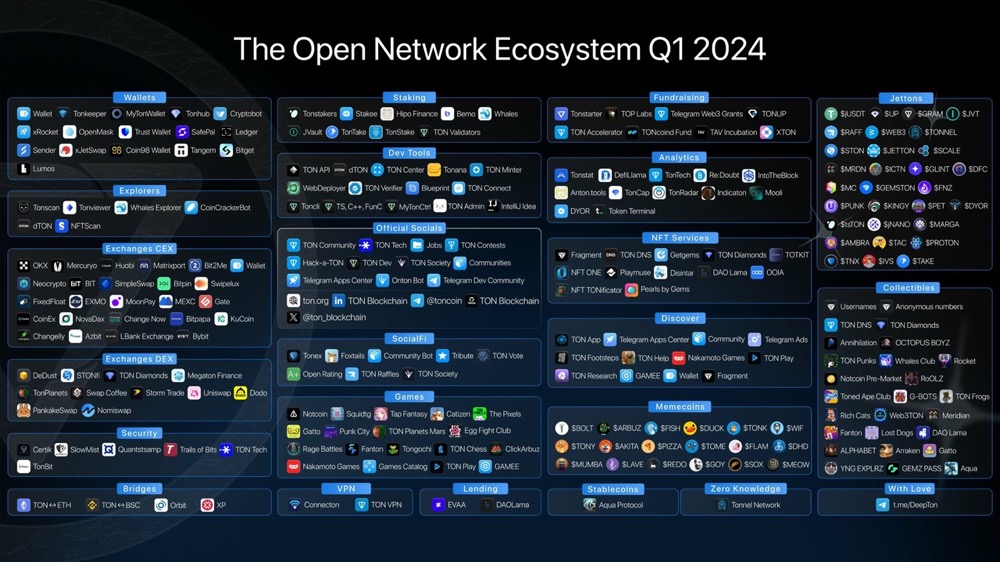
TON tokens are the core of the TON ecosystem. First, TON can be used to pay gas fees to power all transactions on the blockchain. Secondly, validators need to hold TON to participate in the proof-of-stake verification process, similar to the Ethereum and Solana networks.
In addition, developers need to pay TON to push and execute smart contracts on TON. Total fees include base fees, storage fees, and execution fees to ensure token utility and validator revenue for the scalable suite.
In addition, users and developers can also use TON to exchange value in the ecosystem with minimal friction. Although the supply of TON tokens increases by a fixed 0.6% every year, 50% of network fees will be destroyed, prompting people to hold it as an asset. If we use the burning rate in June 2024 as a benchmark, the annual burning amount is about 2.89 million TON, which is less than 10% of the 30.65 million new TON that will enter the ecosystem due to inflation in the next 12 months.
In order to decentralize decision-making power, TON holders can obtain governance rights in proportion to their risk positions. While governance is not TON’s primary use case, it can serve as a complementary utility that could theoretically play an important role in shaping the future of the protocol. However, the high degree of centralization (the top 100 holders hold 92% of the supply) severely limits decision-making influence.
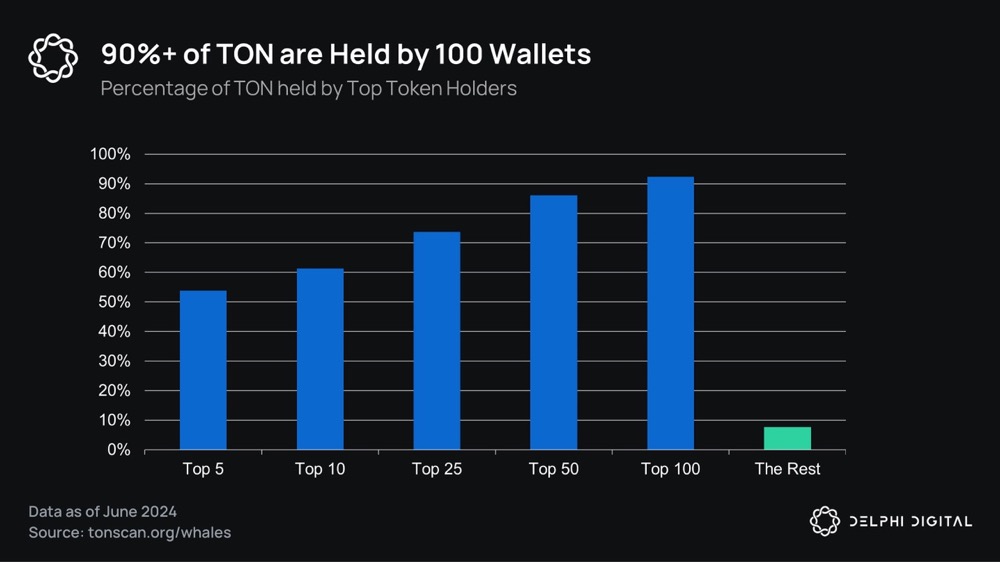
After a June 2023 vote on the possible burning of 50% of network fees (98% of votes in favor), the TON supply is constantly being burned. It is worth noting that the voting consensus on TON is very high.
Although only four proposals were voted on, all proposals were passed with an average approval rate of 96%, which means that the community consistency within the TON ecosystem is very high. This overwhelming consensus also relies to a large extent on the high concentration of TON tokens, with more than 92% of the voting power coming from 100 wallets.
The Ton Believers Fund is another example of the strong beliefs at the heart of this community. More than 1.3 billion TON have been locked in the fund for five years, accounting for approximately 25% of the total supply. In 2023, the fund stops accepting funds and initiates a two-year hard lockup period, followed by a three-year linear vesting period for locked tokens and rewards.
While locking up a significant amount of supply for five years demonstrates the long-term belief of the TON community, it also further centralizes governance. In addition, the incentive structure is not clear. TON’s rewards for stakers come from “donations” and a proposal, which was passed with 99.4% of the votes and plans to allocate 1 million TON (<0.1% of pledged tokens) to Pledger.
TON’s attention
The growth of TON has been explosive. The dApps in the TON ecosystem are constantly reorganizing user records. Notcoin reached 40 million users within six months, while Hamster Kombat's registered users exceeded 200 million and its DAU exceeded 30 million.
This coincides with the fast-paced growth we’ve seen in early social games like Farmville and Yangliugeyang, and highlights the power of cryptocurrency growth incentives. Hamster Kombat is expected to launch the token soon, and NOT had an FDV of $1 billion when it launched on Binance last month. It peaked at $2.1 billion and has now retraced to around $1.45 billion.

The popularity of the TON ecosystem can be attributed to an initiative announced by Telegram at the end of February that its advertising network will distribute 50% of the revenue generated to channel owners through TON. The move opens up a huge potential market for advertisers, allowing them to access Telegram's massive user base. On the day the news was released, TON rose by as much as 40%. Since then, its market share has not stopped growing.
From the first quarter of 2022 to the fourth quarter of 2023, the ecosystem has achieved steady growth among its developer community. In the first quarter of 2022, TON's Telegram development community had approximately 2,200 users; by the fourth quarter of 2023, this number had risen to 13,500. As of June 2024, the number of users has increased by nearly 100% to 36,500, a significant surge compared to previous growth.
Recently, the number of developers in the Mandarin community has increased significantly, from 2,300 to more than 7,300, an increase of more than 300%. In comparison, the Russian-speaking community only grew by about 50%. This phenomenon shows the growing interest from the Chinese cryptocurrency community.
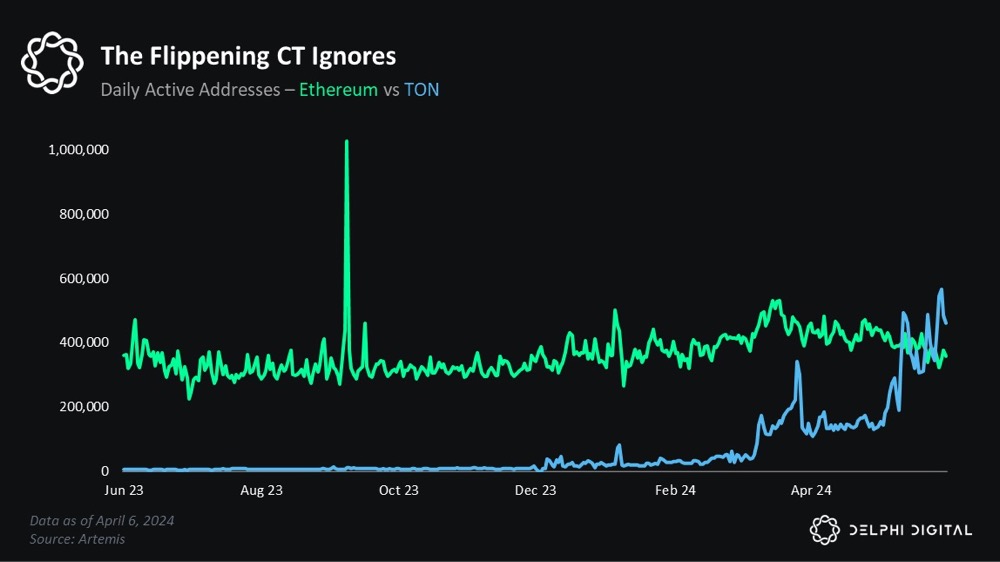
In the second quarter, TON's daily active wallets and transaction volume showed an upward trend, mainly driven by Notcoin and Hamster Kombat. Likewise, transaction volume has grown significantly over the past three months, recently topping 8 million after hovering between 500,000 and 1.3 million in the first quarter (excluding a three-week peak following the ad network's release) daily trading volume mark.
This trend is reflected in the number of wallets, wallets enabled on the chain, NFT minting volume, and overall DAU. Activity metrics are starting to show exponential growth across the board.
TON Growth Plan
The TON Foundation plays a key role in overseeing the ecology and promoting development. As a non-profit organization, its mission is to inspire innovation and benefit the entire TON ecosystem. With the support of the US$90 million ecological fund established in 2022 and the newly established 30 million TON community reward program (currently valued at approximately US$228 million), the foundation has implemented various investments and grants to promote the ecological The development of native dApps.
Since March, the TON Foundation’s accelerator program has experienced significant growth. Of the 82 approved proposals on Questbook, 17 were games or game infrastructure, and GameFi has become one of the most represented areas. Recently, TON also announced a TONX accelerator program worth US$5 million to help promote its aggressive development strategy.
In addition, the TON community recently announced that it will hold an eight-week offline " Open Alliance Hackathon " in 13 IRL locations. Teams around the world will have the opportunity to win up to $500,000 in prizes and network.
Community rewards are an important part of TON's long-term development strategy. Most events last 2-4 weeks and are often very simple in order to attract as many participants as possible.
So far, the TON Foundation has issued rewards worth more than 40 million US dollars , and there are many activities ongoing or planned. In the airdrop rewards, LP Boosts and The Open League Battles activities, the TON Foundation distributed a total of US$22.4 million in rewards, of which 17% (US$3.9 million) was allocated to game projects.
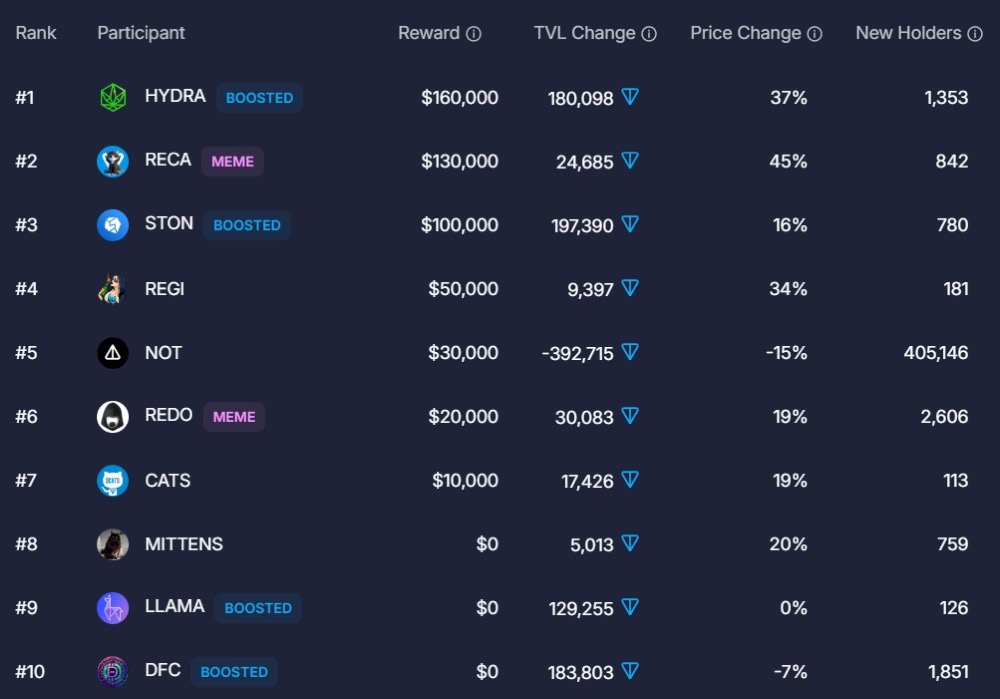
In the above-mentioned activities, the TON ecosystem’s game project achieved great success and topped the application battle rankings . TAP Fantasy finished second in the Beta season and won the first season.
The championships of Season 2 and Season 3 were both won by Catizen, a game developed by a Chinese team with experience in WeChat mini-games. Citizen is currently expected to win the championship in the third season, followed by Yescoin and SquidTG, which may become the top three in the rankings.
Games bring valuable and sustainable user attraction to TON. With teams like Catizen generating over $10 million in revenue from in-game purchases in the past three months, teams with monetization expertise are well positioned to turn hyped user metrics into valuable revenue streams. .

While Catizen is taking its time building an empire, Hamster Kombat and Notcoin have also been in the spotlight over the past few weeks. Hamster Kombat's Twitter followers exceeded 9.9 million in 77 days, with an average of more than 2 million views per tweet, and the number of users reached 142 million. Meanwhile, Notcoin launched its own token through the Binance Launch pool in early May and has $1.45 billion in FDV, 2.44 million on-chain holders, and 40 million active users.
While these figures are impressive, the project teams building on TON will need to prove their ability to operate on a regular basis and convert free-to-play users into paying users without resorting to a strategy of infinitely inflationary token rewards. . Acquiring users is crucial, but you also need to regularly provide fresh stuff to retain users, especially in the attention economy era like Web3.
In addition, due to the low cost of robots, it will soon become a problem for the project team. Without effective countermeasures, the prospect of financial rewards will attract large numbers of bots, diluting player rewards while creating additional selling pressure.
Games and user acquisition
User acquisition (UA) is a key metric for any mobile game studio. In this highly competitive and razor-thin industry, expanding the user base is the key to sustained success. According to CNBC calculations , the operating profit margin of the gaming business is less than 6%, forcing gaming companies to cut costs across the board.
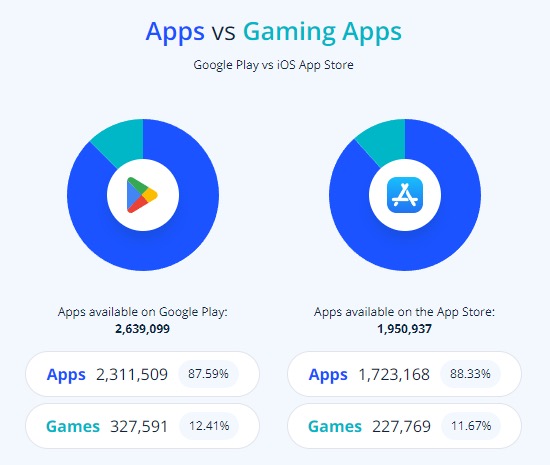
Currently, there are more than 300,000 game applications on Google PlayStore and more than 225,000 on Apple AppStore. A large number of games compete for the approximately 2.2 billion mobile game players worldwide, causing UA costs to rise sharply. Back in 2018, the cost per install (CPI) was around $1.24 for iOS and $0.53 for Android. Just 6 years later, those costs have risen to $2 to $5 for iOS and $1.50 to $4 for Android.
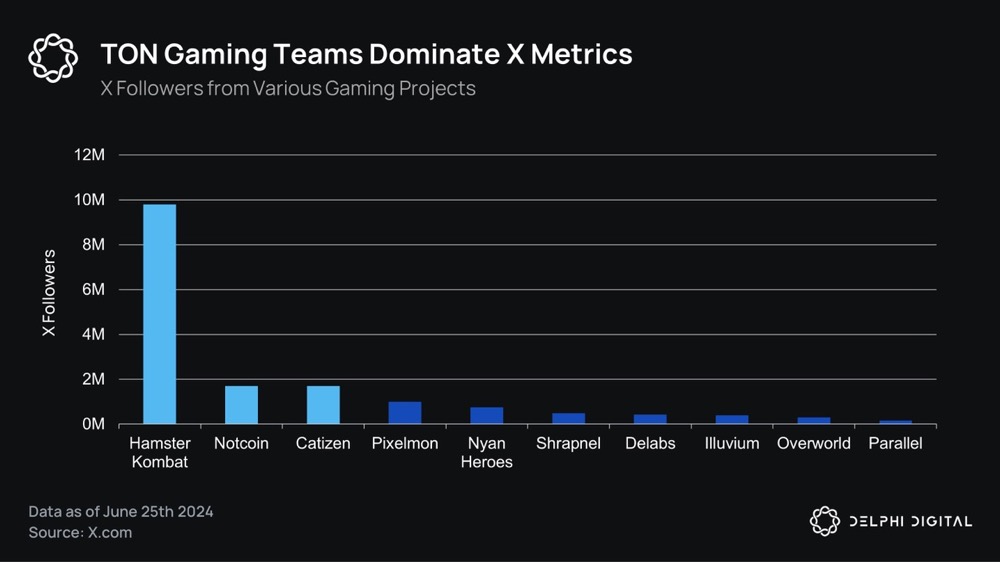
According to a report from Sensor Tower, 28,000 mobile game publishers had revenues of less than US$1 million in 2020, cumulatively contributing approximately US$834 million (2%) to AppStore game revenue. By comparison, the 940 studios with more than $1 million in revenue contributed a cumulative $34 billion (98%). It can be seen that the mobile game industry is seriously imbalanced, and small studios that cannot afford large UA expenditures are at an extremely disadvantaged position. Assuming that roughly 60% of users' time is spent in games that are more than six years old, it's not surprising that 83% of mobile games fail within three years of launch. For new mobile game studios that want to penetrate the industry sustainably, efficient UA has become the key to survival.
In order to help developers cope with the increasingly competitive mobile game market and further improve the efficiency of Web2 to Web3 conversion, Telegram recently launched stars , a native IAP currency that can be easily integrated into bots and mini-games. Now, users can seamlessly purchase their favorite game props through this AppStore-compliant currency, bringing deeper player consumption and a more stable revenue stream to developers, who will receive 70% of the IAP share.
By paying subsidies to teams that pay advertising fees in stars, Telegram not only helps game publishers reduce customer acquisition costs, but also makes itself and its Web3-friendly user base an attractive Web3 marketing platform. Additionally, stars can be redeemed for TON , effectively connecting them to the wider liquid market. As long as the TON token remains healthy, developers can be guaranteed to receive stable and efficient rewards.
Considering the rising cost of UA for mobile games and Telegram's large encrypted open user base, TON has the potential to become a valuable channel for Web3 games, helping them bring new Web3 users into their ecosystem. Although the technology stack limits the scope of developers to build games for Telegram, the large user base, low platform development costs and low user friction environment make it a strong pillar of the Web3 game ecosystem.
It is foreseeable that in the near future, mature game projects will undoubtedly utilize TON as a channel. Telegram's unique positioning makes it an extremely attractive top mobile gaming UA platform. By building experiences on TON that are accessible with minimal friction and require little effort from players, game teams can cast a wide net to attract users. Distributing moderate practical rewards in the game can also be an effective bait to introduce new potential players into the ecosystem.
Popular games on TON
In the past few months, the performance of the TON gaming ecosystem has been rising steadily. Driven by various TON growth plans, relatively simple HTML5 games, minimal development costs, and a large number of potential players, TON has established itself as an extremely attractive option.
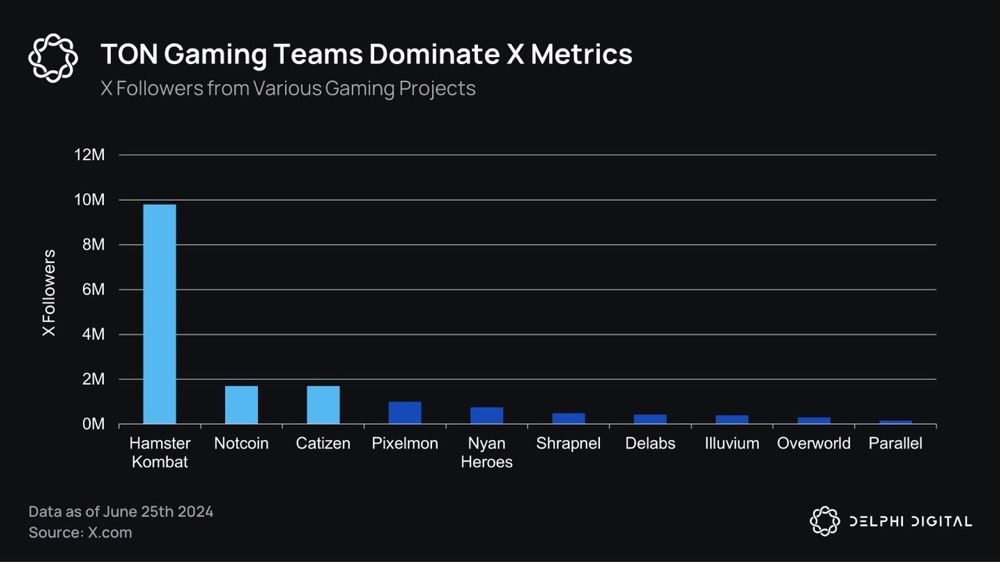
Incentivized recommendations are one of the main drivers of strong growth in its social metrics. While this strategy has proven to bring a large number of new users to the ecosystem, it does not solve the lack of deep monetization inherent in casual games like Notcoin and Hamster Kombat. And this is also a key issue for game retention and sustainable development.
Click-and-click games are fundamentally unequipped to monetize valuable users, while hybrid, casual, and hardcore games combine the necessary low-friction uptake with deep potential revenue streams. Finding the right balance between low-entry games and providing enough social competition and entertainment value can make users feel the need to improve, and will also determine the success of these mini-games.
Notcoin
These days, few teams capture the culture and primitives of Web3 as well as Notcoin. By allocating 95% of its tokens to users, Notcoin has created a special brand that blends memes with a sense of community. As a simple "tap-to-earn" game, the threshold for players to participate is extremely low. This also realizes the decentralized distribution of NOT, with more than 2.44 million holders on the chain.
Notcoin's fast-paced development, completely community-centric issuance method, and meme-like culture make it a catalyst for the entire TON ecosystem. Incremental gaming existed long before Web3.
Cookie Clicker , a point-and-click game originally released in 2013, is probably the best-known example. The number of players in this game reached a peak of approximately 1.5 million in August 2023, and there are still an average of 15,000 online players at the same time. A recent incremental game, Banana, has been the second most concurrently played game on Steam for three consecutive weeks.

NOT has been successfully used across the entire TON ecosystem, and various TON games accept NOT for in-game purchases. In addition, the Notcoin team negotiates a burn rate for each transaction, for example, 10% of NOT used in Catizen will be burned, thereby reducing supply and increasing buying pressure. Since the game itself lacks sustainable entertainment value, Notcoin will have to rely on integrating its cultural significance into as much ecology as possible to provide continued utility.

By conducting its Initial Coin Offering on Binance Launch Pool, Notcoin has capitalized on its recent growth and solidified its position among the top gaming tokens as one of the top gaming tokens this cycle. According to CoinMarketcap (06.24.24), NOT is the third largest gaming token by market capitalization. Since its release on May 16, Notcoin's average daily trading volume has ranged from US$300 million to US$1.5 billion, ranking among the top among all ecological game tokens.
Catizen
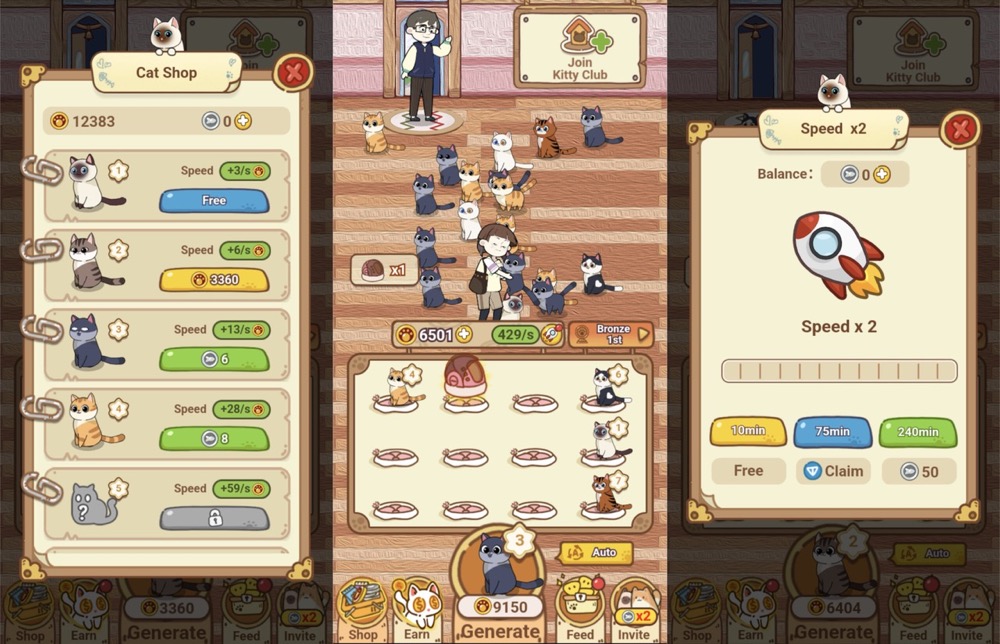
When talking about popular games on TON, Catizen has to be mentioned. The game team's previous experience in WeChat game development has translated into Catizen's excellent launch performance, with more than 20 million registered users in just two months.
The Catizen core team has developed more than 20 mini games since 2018, which have been downloaded more than 300 million times on WeChat, Google Play and Facebook. Catizen is the game on TON that generates the most in-game revenue through IAP. Its 2.7 million DAU has brought the game more than $10 million in TON revenue.
In addition, about 50% of the 1.25 million on-chain users are paying users, and the average consumption per player is approximately US$170. Additionally, the game has a conversion rate of 7%, which is 900% higher than the average conversion rate of Telegram games of 0.66%.
Catizen's games are designed to be simple and fun. The game is set in the Meowverse. Players will receive a digital cat when registering, and players can upgrade it to improve their ranking on the leaderboard. By breeding cats, completing tasks or participating in mini-games, players can obtain tokens and NFT rewards, and continue to improve their strength in the game. The company plans to launch more than 200 mini-games in the next few months, establish an open mission platform as a user funnel for other projects, and integrate e-commerce, which shows the huge scope of its business.

TON games have been very active in community distribution, which is one of the main catalysts for its exponential growth in users. In TGE, most Web3 game teams do not have the ability to airdrop a significant portion of the supply to the community, while Catizen uses 42% of the supply for community airdrops. Surprisingly, players mostly do not consider ROI when spending, because to get a decent return on tokens, you have to pay extremely high fixed costs.
Hamster Kombat
Catizen and Notcoin stand out with their excellent monetization strategies and clever use of Web3 culture, while Hamster Kombat shines through its social reach. In the past seven days, Hamster Kombat's Twitter posts have averaged 2.2 million views, 20,000 likes, and over 2,000 retweets.
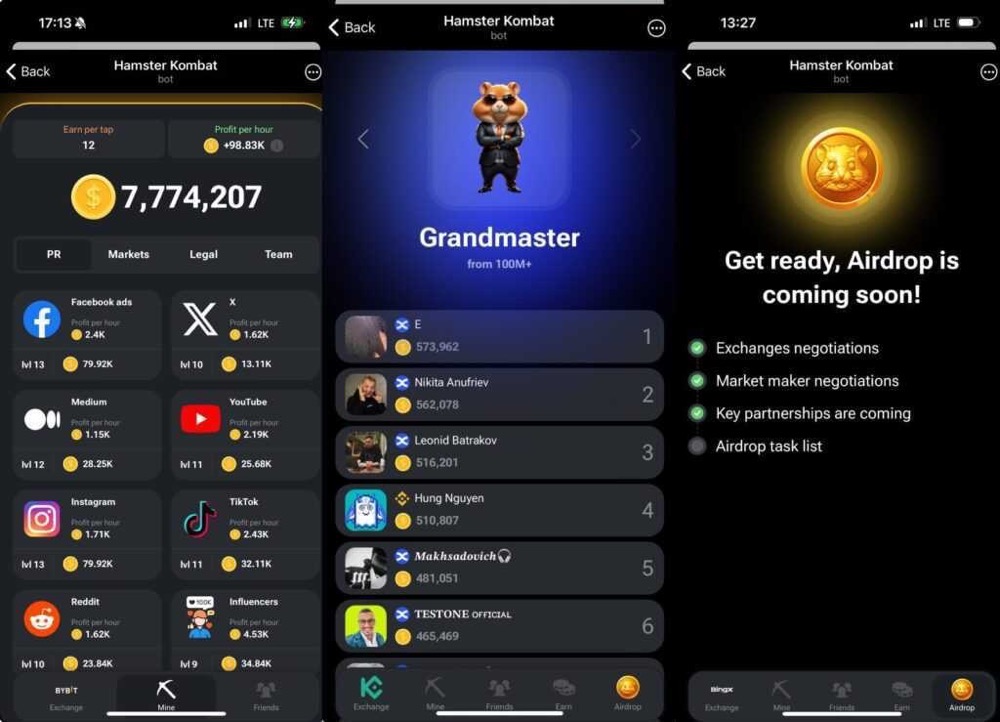
The core gameplay of Hamster Kombat is very similar to Notcoin. Users enter the game, click on the screen, and accumulate points over time. The player takes on the role of a fictional hamster, the CEO of a cryptocurrency exchange, and the goal is to mine as many HMSTR coins as possible. Players can increase their income by investing in marketing, licenses, talent, and new in-game products or by recommending new players.
This simple game has attracted more than 200 million registered users. The prospect of potential returns combined with the minimum requirements on users leads to exponential growth in the number of users. The team not only works on Telegram and Twitter, but also puts a lot of effort into gamification of the YouTube channel .
The team publishes two 2-minute videos every day, one reporting daily cryptocurrency news and the other is usually an educational video. The team will hide clues in the video to encourage users to continue participating.
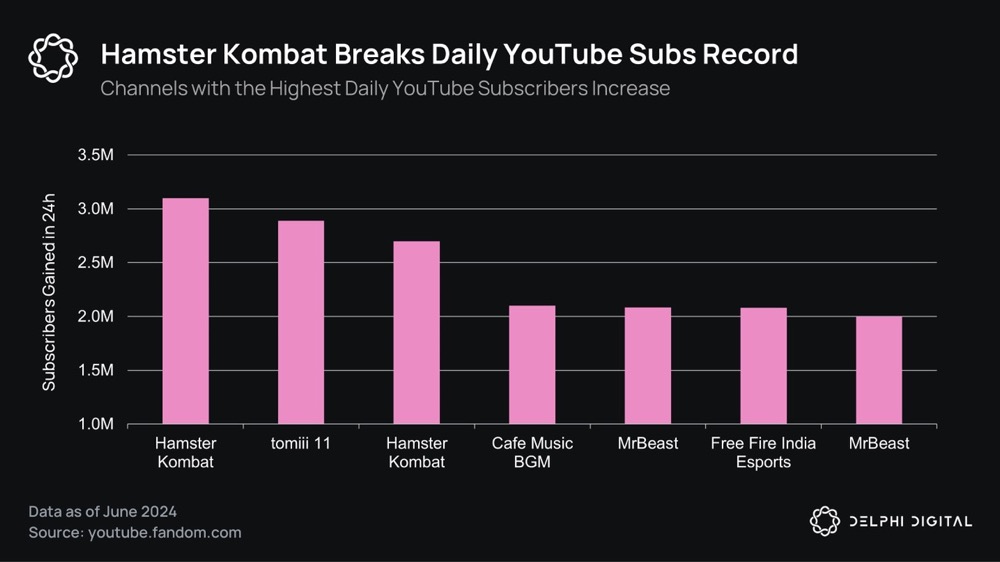
Hamster Kombat's YouTube channel currently has over 28 million subscribers, making it one of the fastest growing YouTube channels in history. The 137 videos uploaded generated a total of 461 million+ views. From the perspective of other Web3 games, this number is about 100 times higher than the Illuvium YouTube channel.
Fanton
Disclosure: Delphi Ventures is an investor in Fanton.
Despite being a football app launched during the European Football Championship, Fanton has attracted far less attention than the three projects mentioned above. The project has flown under the radar relatively speaking, but still finished fifth in Open League Season 3, netting the team $30,000 in revenue. The game's lack of social capital may be due to their more niche audience and fierce competition (primarily Sorare), as well as their relatively less aggressive token strategy, which does not commit to a large-scale community airdrop on TGE.

The game adopts a typical fantasy football gameplay . Users can select 5 players to form a team lineup and rate them based on their real-life performance. Users who pick the best lineup combination and score the highest points on a given match day are rewarded through leaderboards. The game covers the five major European leagues, the Brazilian League and the current European Football Championship. The event is broadcast in 229 regions, with a cumulative viewership of 5.2 billion (1.9 billion unique viewers), and the average live game audience in 2020 exceeds 100 million .
Users can participate in ordinary tournaments or NFT tournaments, the latter requiring users to own NFT to participate. Winners can receive TON and NFT rewards, unlocking tournaments with higher rewards. Despite a reported MAU of 200,000, typical free-to-play tournaments over the past few weeks have had between 1,000 and 5,000 players, while pay-to-play tournaments have had between 10 and 1,000 players.
It is worth noting that approximately 37,000 people attended the first round of the $100,000 European Championship. The number of applicants for the second round dropped significantly, to only about 7,000. In addition, while the bonus pool was displayed to attract users, the number of registered users dropped by 81% after the second round of competition, indicating that it has difficulties in user retention. Without an active token approach like Notcoin or Catizen, the project will have a hard time competing with larger projects like Sorare.
Gatto
Gatto is a cross between a tamagotchi, a platformer, and a farming simulator. Players can collect NFT, take care of their pets, and continuously upgrade in the game. On March 26, the TON Accelerator Program accepted 11 applications (170 in total), and Gatto was one of them. Therefore, it has also received wider ecological support and promoted game development.
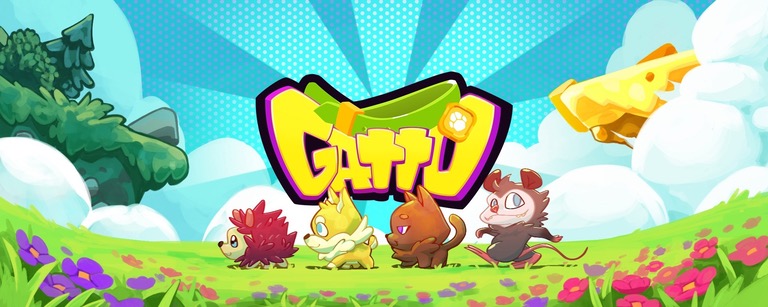
Compared with the above-mentioned games, the Gatto community is not that outstanding. The official Twitter account has only 23.5k followers and has released less than 10 posts. Player communication is basically conducted through Telegram, and its information channel has more than 75,000 subscribers. The focus on Telegram has not affected Gatto's user acquisition, with the game surpassing 1 million registered users just over three months ago.
Gatto promises RPG content, PvE-like modes, and PVP expansion packs in the second half of 2024. In early 2025, Gatto hopes to develop a city-building game to add another layer of progression to its ecosystem.
However, ideals are full and reality is skinny. In the past three months, Gatto has been left behind by games such as Catizen and Hamster Kombat. The next few months will be an interesting case study in how implementation plays out in Telegram mini-games, and whether Gatto can close the gap with simpler games like Hamster Kombat.
Bear market and bull market theory
Some readers may naturally compare today's Telegram mini-game ecosystem with early WeChat mini-programs, and then unconsciously be excited about the exponential growth in the coming years. While there is some truth to this assumption, before outlining our “bull thesis,” it’s worth briefly outlining some of the clear and unbridgeable differences between the two.
bear market theory
Even if it is possible, it is not very likely that Telegram will become a universal application on the same scale as WeChat in the next five to ten years. User behavior on the two platforms will continue to differ. For WeChat in China, the world's second-largest economy, the number of competitors for users' attention and consumption is far smaller than Telegram and its global audience.
Furthermore, WeChat directly benefits from its highly centralized structure. WeChat not only benefits from Tencent's extensive product and service ecosystem, but also benefits from a very favorable regulatory environment, allowing its domestic market share to grow rapidly.
WeChat’s highly integrated wallet application is a good example, but its functionality is not easily replicated. With its undisputed dominance in the Chinese market, WeChat has direct integration with essentially all Chinese domestic banks. Therefore, in many cases, the process for WeChat users to go from playing games to purchasing game items is fewer steps than downloading apps from the app store. In contrast, TON users must first purchase a fixed amount of stars or directly deposit cryptocurrency before they can participate in in-game currency-related processes.
Another key point is UA. Although Telegram allows for lower ad spend with the use of Stars, this does not change the fact that the effectiveness of ad networks on the platform is limited. The best Telegram mini-game developers can hope for is to identify users who have certain mini-apps open. This is in contrast to WeChat, which has a wealth of rich data on all its users, including financial, credit and social scores.
Additionally, while ad networks will continue to improve over time and more third-party integrations will be introduced (such as WeChat’s partnership with Douyin), Telegram’s privacy-centric value proposition will mean that demographics and High-granularity data such as geographic location may still be unavailable.
bull market theory
Despite this, Telegram/TON maintains many unique features that differentiate it not only from WeChat but from all other Western social apps. The establishment of TON immediately positioned Telegram as one of the largest entry points for Web2 users to enter Web3. It also made Telegram's approximately 900 million MAU the largest pool of "Web2.5 users" and became the main distribution channel for almost all major cryptocurrency markets. .
What's more, unlike centralized exchanges like Coinbase and Binance, Telegram is fundamentally a social app, which means user behavior within the app is very different. In other words, since the purpose of users logging into Coinbase is to trade cryptocurrencies (which is a highly independent and serious behavior), users will undoubtedly have stronger resistance or resistance when it launches any leisure, entertainment or social functions. Churn tendency. Telegram, on the other hand, leans toward the other extreme, so social-related applications such as games are easier to integrate with it and have a higher degree of product-market fit.
Encouragingly, based on the case studies in this report, Telegram users appear to be highly aligned with apps that combine social apps with substantial financialized incentives. Even assuming that more than 80% of these "users" will be attracted by "finding the next Notcoin", the indicators of these simple games have exceeded many big-budget games in this and the previous round.
Looking back at the development of WeChat, readers should remember that with the opening of more cross-platform UA channels and the reduction of customer acquisition costs, its situation has really begun to heat up. We hope Telegram uses this knowledge to make third-party integration a priority, despite the risk of user churn.
This, coupled with a deeper understanding of native user behavior and genre-market fit, will provide opportunities for Telegram mini-games that understand how to operate and monetize professionally in real-time to grow on the platform.
In addition, many developers may choose to continue to use Telegram as a top-of-the-funnel UA channel for user screening. After all, although the upper limit of WeChat mini games is very high, only about 30% of all WeChat mini games are pure mini game studios. Most studios run small games alongside standalone apps in order to gain cross-platform user experience, cross-platform play (players using multiple platforms often cost more), and a larger addressable market.
in conclusion
The mindshare TON has gained among users in recent months has been impressive. The mini-game ecosystem, led by Catizen, Notcoin, and Hamster Kombat, has played an important role in the dramatic growth of on-chain activity. Hundreds of millions of users are playing TON games, and tens of millions of dollars have been invested in the ecosystem this year.
The grant program has been key to TON's recent success and further illustrates the dilemma Web3 game developers currently face in competing for player liquidity. The newly deployed growth plan provides funding, technical support and marketing assistance to game teams, further accelerating the team's participation in the ecosystem.
Introducing Star as a native Telegram in-app currency that flows to the Web3 system in a near-barrier-free manner is expected to allow the team to increase the level of in-game monetization. Games like Catizen, Notcoin, and Hamster Kombat have established themselves as serious gamers.
After the success of Notcoin, everyone is waiting for the next game to be launched to evaluate its development trend. Whether the success of Catizen and Hamster Kombat can be replicated is questionable, but they have the potential to challenge the top twenty gaming tokens in terms of market capitalization at launch.
In the short term, many teams are likely to take full advantage of TON's current mindshare and try to lure users away from the platform and into their own games or protocols. However, if we assume that developer tools and support will become more powerful over time, native games that can take lessons from platforms like WeChat and apply them to Telegram will be a case study worth watching in the medium to long term.
The second half of 2024 will be crucial for TON games. After the initial explosion of users laid a solid foundation for the ecosystem, the focus will now shift to retention and LTV.
These two key sustainability metrics rely more on content than virality than user acquisition. These metrics will force teams to perform meaningful normal operations to achieve sustainable development.
All information provided on this website is for reference purposes only. This website does not guarantee the accuracy, validity, timeliness and completeness of the information. Any reliance on the information provided on this website is entirely at the user's own risk.









